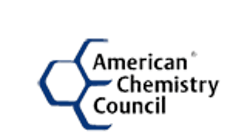“The U.S. business of chemistry is growing like never before, but limitations across all modes of transportation are getting in the way of fully realizing this American manufacturing success story,” says ACC president and CEO Cal Dooley. “With our industry already committed to investing billions of dollars and creating new jobs in the U.S., we must work together to improve our nation’s transportation and infrastructure system in order to help usher in a new era of American manufacturing.”
Announced new U.S. chemical and plastics projects are expected to increase production by 53 million metric tons of new chemical output per year, requiring an addition 1.8 million shipments per year by 2020, according to the report. Given the current challenges already present in the transportation network, chemical manufacturers will likely face additional transportation-related costs that threaten to throttle future growth.
“In our recent report, we surveyed 68 leading chemical companies and captured their views on transportation and logistics challenges faced by the industry,” says Mark Lustig, a principal at PwC. “Many of the issues they raised are systemic, and will require careful planning and partnerships across both the chemical and transportation sectors in order to successfully manage this new volume.”
Specifically, the report found that the truck driver shortage is likely to become more acute and longer lead times are likely to cause additional problems over the next 10 years. As the Gulf ports become more attractive for exports, the maritime infrastructure around these ports may not be ready to support added volume, leading manufacturers to pursue suboptimal shipping routes. PwC also expects rail service delays to double by 2025 should conditions not improve, leading to a greater demand for more rail cars to hold in-transit products.
Unless these logistics shortcomings are resolved, PwC estimates chemical manufacturers will likely face billions of dollars in increased costs over the next decade, including:
- Excess Inventories: Additional inventory held due to transportation delays will likely translate to a cost of $22 billion in working capital.
- Capital Expenditures (CAPEX): Expenditures are expected to increase by $23 billion for equipment and infrastructure required to handle increased congestion and delays.
- Operating Costs: Costs will likely increase by an additional $29 billion over a ten-year period due to logistical inefficiencies.
ACC estimates that the announced investment of more than $160 billion over the next decade will help create 426,000 direct and supply chain jobs in the U.S. economy. This positive manufacturing renaissance story is at risk, however, due to inadequate transportation infrastructure, according to the organization. Based on an ACC analysis of the PwC report’s findings, the chemical industry will likely incur an additional $7 billion in transportation costs annually related to congestion and delays by 2025. ACC estimates this will put nearly 17,000 jobs at potential risk if the transportation network is not upgraded and expanded to meet the volumes expected over the next decade.
Read the entire report here.

